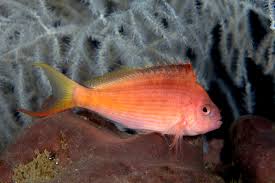Exploring the Appearance of Dragons in the Rituals of Chinese Ethnic Groups

In Chinese culture, the dragon is a potent symbol of power, protection, and auspiciousness. Its mythical and symbolic significance spans across various regions and ethnic groups in China, and its presence in rituals and ceremonies is widespread. From major state rituals to community-based traditions, the dragon continues to be a key figure representing prosperity, strength, and good fortune. This article delves into the historical, cultural, and spiritual significance of the dragon in the rituals of different Chinese ethnic groups, shedding light on its omnipresence and the ways in which it has been woven into the fabric of ceremonial life.
1. The Dragon as a Symbol in Ancient Chinese Rituals
The dragon, in its earliest form, appeared in rituals primarily associated with the imperial court. Throughout China’s dynastic history, the emperor, as the Son of Heaven, was considered the earthly representation of the dragon. This divine connection formed the foundation of many rituals, where the dragon symbolized the emperor’s power and his role as the protector of the nation.
One of the most important rituals tied to the dragon was the annual sacrificial rites performed to appease the gods and ensure the prosperity of the nation. The dragon dance and dragon boat races, both of which have roots in ancient rites, were believed to bring good fortune and protect the people from calamities. These traditions, often performed in both royal and folk ceremonies, were accompanied by prayers and offerings to the dragon, invoking its strength and protection.
In ancient China, the emperor would conduct rain-making ceremonies, often invoking the dragon to control weather patterns. These rituals, which typically took place in sacred temples or on mountain tops, involved the emperor wearing a dragon robe and offering sacrifices to ensure rainfall and abundant harvests. This was particularly important for an agrarian society like ancient China, where the success of crops was directly linked to the heavens and the dragon’s power to influence the weather.
2. The Role of Dragons in the Rituals of Han Chinese People
The Han Chinese, the largest ethnic group in China, have long revered the dragon as a symbol of imperial authority and national unity. Throughout Chinese history, the dragon has been a prominent feature in both religious and secular rituals, representing harmony and balance between humanity and nature.
In Han Chinese rituals, the dragon often appears in festivals, particularly during the Dragon Boat Festival. This festival, celebrated on the fifth day of the fifth lunar month, has roots in ancient Chinese rituals of ancestor worship and the honoring of heroic figures. The dragon boat races symbolize the effort to ward off evil spirits and bring good fortune. The presence of the dragon in these races, often carved or painted onto the boats, is a manifestation of its power and its role in protecting the community.
Another Han Chinese tradition that prominently features the dragon is the Chinese New Year celebration. During the festivities, the dragon dance is performed in many regions, with a long, colorful dragon paraded through the streets. The dancers, holding poles, manipulate the dragon to mimic its movements, symbolizing vitality and the promise of prosperity in the coming year. The dragon dance has spiritual significance, as it is believed to scare away evil spirits and invite positive energy into the community. The presence of the dragon in these rituals reflects the deep reverence for the creature and its powerful role in Chinese cosmology.
3. The Dragon in the Rituals of Minority Ethnic Groups
While the dragon is closely associated with the Han Chinese, it also plays a significant role in the rituals of various ethnic minorities in China. These groups, despite their diverse cultural practices, have adopted and adapted the dragon’s symbolism in ways that align with their unique beliefs and customs.
Tibetan Dragon Rituals
In Tibetan culture, the dragon, known as the “drak”, is closely linked to both natural and spiritual realms. It is often seen as a guardian of the land, mountains, and water. Tibetan dragon rituals are typically associated with prayers for protection, prosperity, and the spiritual well-being of the community. In Tibetan Buddhist traditions, dragons are revered as protectors of Buddhist teachings and are depicted in numerous mandalas and thangkas (religious paintings on fabric).
Tibetan dragons are often featured in religious rituals to ensure that the environment remains balanced. One of the most notable occurrences of dragon symbolism is seen during the Lhosar, the Tibetan New Year celebration, where dragon imagery is used in dance and decoration. These dances are performed to honor the forces of nature and invoke blessings for the year ahead. The dragon in these rituals is not just a symbol of protection but also of renewal and cleansing, important concepts in Tibetan spiritual practices.
Mongolian Dragons in Rituals
In Mongolian culture, the dragon plays a significant role in shamanistic rituals. The Mongolian dragon is often associated with the sky and the earth, embodying the dual forces of the natural world. Mongolian shamans invoke the dragon spirit during healing ceremonies, seeking to balance the energies of nature and provide protection to individuals and communities.
During Naadam, the Mongolian festival celebrating the nation’s traditional sports, music, and culture, dragons are sometimes represented in performances or rituals to honor the spirits of ancestors and invoke the protection of the land. In these practices, the dragon serves as a bridge between the human world and the spiritual realm, ensuring that the Mongolian people are shielded from negative influences and that the land remains fertile and peaceful.
Uighur Dragons and Spiritual Protection
In Uighur culture, which blends Turkic and Persian influences, the dragon plays a role in the spiritual rituals related to healing and divination. The Uighur people, with their roots in the Silk Road trade network, have historically incorporated various elements from Central Asia and the Middle East into their belief systems. In Uighur folklore, the dragon is often depicted as a creature that embodies the dualities of life: life and death, good and evil, protection and destruction.
During significant wedding ceremonies, the Uighurs may invoke the dragon’s protection to ensure a harmonious union. The dragon’s presence in these rituals represents the balance of energies in the relationship, symbolizing the couple’s ability to overcome challenges and achieve prosperity together. As in other cultures, the dragon serves as a protector in Uighur rituals, ensuring the safety and well-being of individuals and communities.
4. The Dragon’s Presence in Folk Rituals and Festivals
Across China, the dragon appears in a multitude of folk rituals and festivals, which vary widely from region to region but share common themes of protection, prosperity, and spiritual well-being.
In southern China, especially in Guangdong and Fujian provinces, the dragon boat festival is one of the most vibrant celebrations involving the dragon. People participate in races with intricately decorated dragon boats to honor ancient heroes and bring good fortune. The dragon boats are seen as vessels of spiritual protection, helping to guard the participants and ensure the continuation of prosperity in the community.
Additionally, in Daoist rituals, the dragon is often invoked in ceremonies to protect the community from harmful energies or evil spirits. Temples dedicated to Daoist gods frequently feature dragon statues or images as part of the altar displays. These dragons serve as guardians, and incense offerings are made to them to invite blessings and ward off negative influences.
5. Conclusion: The Dragon’s Enduring Role in Chinese Rituals
The dragon remains an integral part of Chinese rituals, not only for the Han Chinese but also for the various ethnic groups that contribute to the country’s rich cultural tapestry. Across different communities, the dragon appears in diverse forms, whether as a protector of nature, a guardian spirit, or a symbol of divine power. From ancient imperial ceremonies to modern folk festivals, the dragon continues to be revered as a symbol of strength, protection, and prosperity.
The dragon’s significance in rituals speaks to the deep-seated belief in the interconnectedness of nature, spirituality, and human life in Chinese culture. Through these customs, the dragon maintains its place as one of the most enduring and powerful symbols in the history of China, continuously linking the past, present, and future of the nation and its people. As a protector, the dragon remains a timeless and sacred figure in the rituals of various ethnic groups in China, ensuring its continued relevance and reverence in the country’s cultural practices for generations to come.


